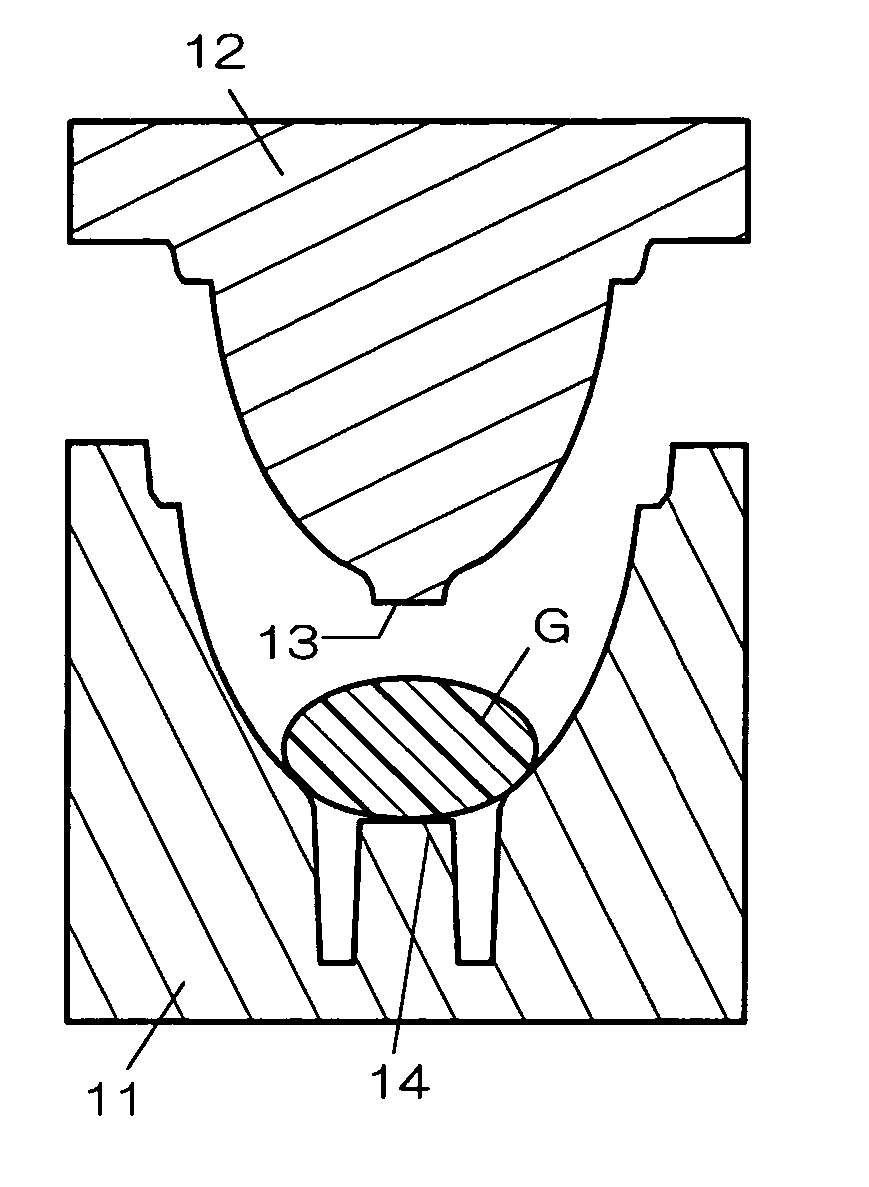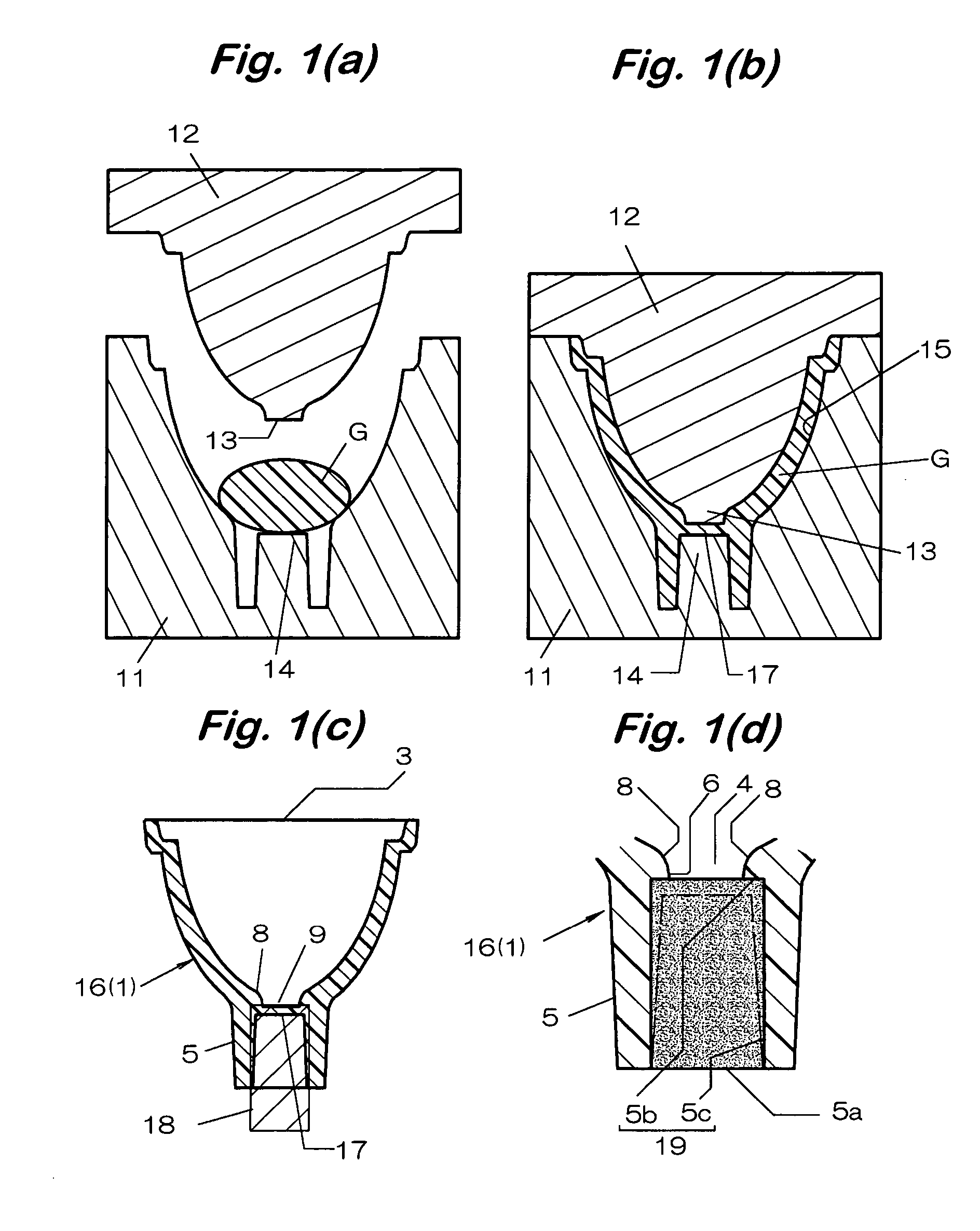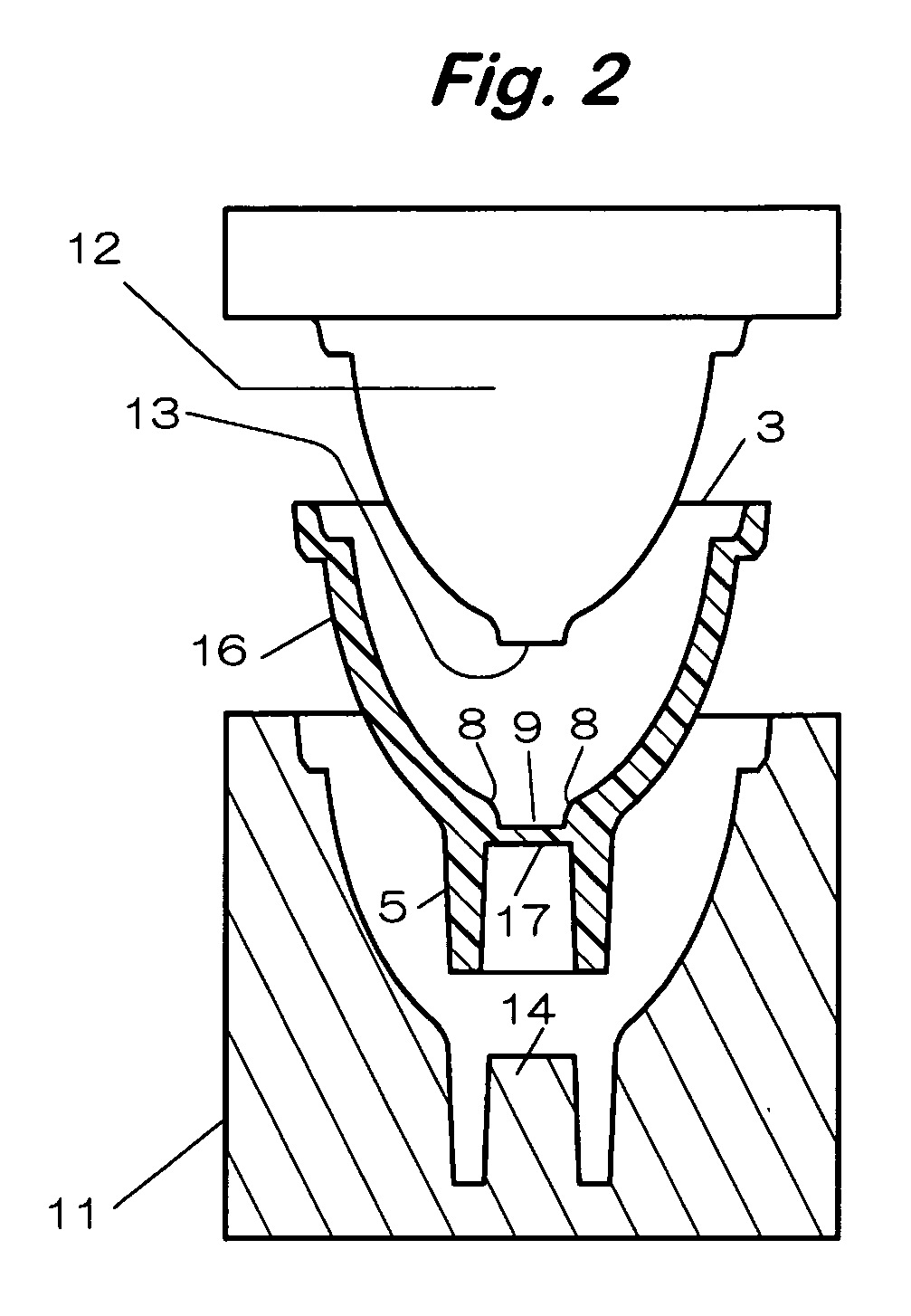Method of manufacturing a glass reflector
- Summary
- Abstract
- Description
- Claims
- Application Information
AI Technical Summary
Problems solved by technology
Method used
Image
Examples
Embodiment Construction
[0022] In the following, a preferred embodiment will be described on the basis of the attached drawings.
[0023] As shown in FIG. 3, the reflector 1 manufactured by the present invention is used for mounting the double end type short arc high-pressure discharge lamp 2. It is made of hard glass (the expansion coefficient thereof is 38×10−7 cm / ° C.). The reflective surface 1a shaped in a paraboloid of revolution is formed in the inside of a reflector 1. The insertion hole 4 which inserts a seal portion 2a of a lamp 2 is formed in the center of a bottom of reflector 1 at opposite side of the opening 3 by which the reflecting light of a lamp 2 is irradiated. And the hollow neck portion 5 in which a seal portion 2a is fixed extends toward the backside of the insertion hole 4. The narrowest portion 6 narrower than the hollow neck portion 5 is formed at insertion hole 4 at the reflective surface side of the hollow neck portion 5. This narrowest portion 6 functions as a dam which prevents th...
PUM
 Login to View More
Login to View More Abstract
Description
Claims
Application Information
 Login to View More
Login to View More - R&D
- Intellectual Property
- Life Sciences
- Materials
- Tech Scout
- Unparalleled Data Quality
- Higher Quality Content
- 60% Fewer Hallucinations
Browse by: Latest US Patents, China's latest patents, Technical Efficacy Thesaurus, Application Domain, Technology Topic, Popular Technical Reports.
© 2025 PatSnap. All rights reserved.Legal|Privacy policy|Modern Slavery Act Transparency Statement|Sitemap|About US| Contact US: help@patsnap.com



